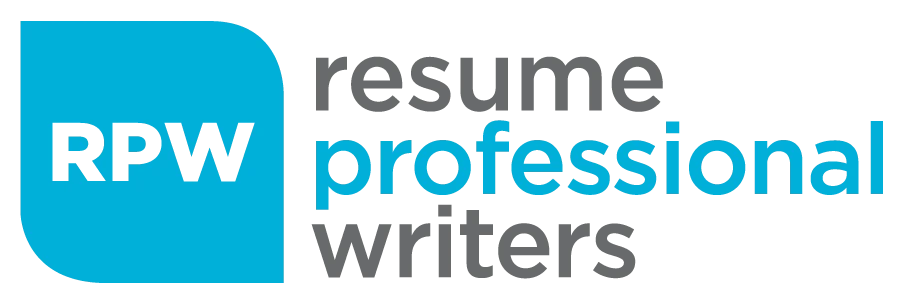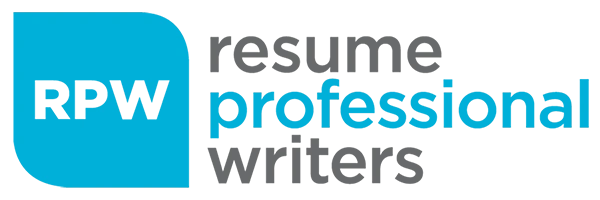Crafting a standout resume is essential in today’s competitive job market. Your resume is often the first impression you make on potential employers, and it needs to showcase your skills, experience, and personality effectively. With the right formatting, you can ensure that your resume captures the hiring manager’s attention and communicates your qualifications clearly and professionally. This guide will provide top tips for formatting resume, including examples and professional templates to help you land your dream job.
Choosing the Right Resume Format
Selecting the appropriate resume format is crucial as it can significantly impact how your qualifications are perceived. The best resume formats are tailored to different job roles and career transitions, emphasizing the importance of structure and presentation. The best resume format depends on your career stage, work history, and the type of job you’re applying for. Resume format examples can help job seekers create an effective and proper resume format and layout by illustrating best practices and offering visual representations. Here are the three main types of resume formats to consider:
Chronological Resume Format
The reverse chronological resume format is the most common type in the United States. It lists your work experience, starting with your most recent position and moving backward. This format is ideal for job seekers with a solid work history and career progression. Additionally, three main resume formats are favorable for applicant tracking systems (ATS) as they ensure readability and help ATS algorithms easily parse resumes and recognize relevant job applicant qualifications. They allow employers to see your most relevant experience at a glance.
Example:
Work Experience
– Marketing Manager, ABC Corp, New York, NY (2020 – Present)
– Developed and implemented marketing strategies that increased brand awareness by 30%.
– Managed a team of five marketing professionals to execute campaigns.
– Marketing Coordinator, XYZ Inc, New York, NY (2018 – 2020)
– Assisted in developing marketing materials and social media content.
– Conducted market research to identify new opportunities.
Functional Resume Format
Functional resumes are suitable for job seekers with little experience or significant gaps in their employment history. The functional resume format highlights relevant skills rather than work experience, making it ideal for career changes or gaps in employment. It allows you to highlight your strengths and relevant skills, making it a great choice hybrid resume format for recent graduates or those changing careers.
Example:
Skills
– Digital Marketing: Proficient in SEO, PPC, and social media marketing.
– Project Management: Experienced in leading cross-functional teams to achieve project goals.Education
– Bachelor of Arts in Marketing, University of XYZ (2018)
Combination Resume Format
The combination resume format merges elements of both chronological and functional resumes, making it ideal for individuals with diverse skills developed over nontraditional career paths. It allows you to showcase your skills and provide a detailed work history. This combination format is particularly beneficial for highlighting both transferable skills and relevant work experience, making it easier to demonstrate qualifications for career pivots or non-traditional paths.
Example:
Professional Summary
Dynamic marketing professional with over five years of experience in digital marketing and project management.
Work Experience
– Marketing Manager, ABC Corp, New York, NY (2020 – Present)
– Marketing Coordinator, XYZ Inc, New York, NY (2018 – 2020)Skills
– Strong analytical skills focusing on data-driven decision-making.
– Excellent communication and interpersonal skills.
Resume Structure
Once you’ve chosen the right format, it’s essential to structure your resume effectively. A well-organized resume typically includes the following sections:
Professional Summary
Your professional summary should briefly summarize your experience, skills, and achievements. Tailor your summary to the job description and highlight your relevant skills. Use active language and incorporate keywords from the job description to make your resume more effective.
Example:
Professional Summary:
Results-oriented marketing professional with over five years of experience in digital marketing and project management. Proven track record of developing successful marketing strategies that drive brand awareness and increase sales.
Work History
List your work experience chronologically, with your most recent position first. Use bullet points to break up large blocks of text and highlight your achievements. Focus on the skills and experiences most relevant to the job you’re applying for.
Example:
Work Experience
– Marketing Manager, ABC Corp, New York, NY (2020 – Present)
– Developed and implemented marketing strategies that increased brand awareness by 30%.
– Managed a team of five marketing professionals to execute campaigns.
– Marketing Coordinator, XYZ Inc, New York, NY (2018 – 2020)
– Assisted in developing marketing materials and social media content.
– Conducted market research to identify new opportunities.
Education
List your educational background, including degrees earned and institutions attended. Include relevant coursework, academic and professional achievements, and special honors or awards.
Example:
Education
- Bachelor of Arts in Marketing, University of XYZ (2018)
- Relevant Coursework: Digital Marketing, Consumer Behavior, Marketing Research
- Honors: Dean’s List (2016-2018)
Certifications
List any relevant certifications, licenses, or special training you’ve received. Include the name of the certifying organization, the date earned, and any pertinent details.
Example:
Certifications
- Google Analytics Certified (2021)
- HubSpot Inbound Marketing Certification (2020)
Resume Layout and Design
The layout and design of your resume play a significant role in its readability and overall impression. Here are some key considerations:
Font and Margins
Use a standard font, such as Arial, Calibri, or Times New Roman, in size 10 or 11 points. Set your margins to 1 inch on all sides to ensure your resume is easy to read.
Font Size and Style
Maintain a consistent font size and style throughout your resume. Use bolding or italicizing to draw attention to important information, such as job titles or company names.
Bullet Points and White Space
Utilize bullet points to break up large blocks of text and highlight your achievements. Effective use of white space makes your resume easy to scan and read, allowing hiring managers to quickly find the information they need.
Resume Formatting Tips
File Format and Length
Save your resume in a format easily readable by applicant tracking systems (ATS), such as a Word document or PDF. Keep your resume to one or two pages in length, depending on your experience level. A concise resume is more likely to be read in its entirety.
Editing and Proofreading
Carefully edit and proofread your resume to ensure there are no errors in spelling, grammar, or formatting. A polished resume reflects your attention to detail and professionalism. Consider asking a friend or mentor to review your resume and provide feedback.
Resume Templates and Examples
Using templates can simplify the resume creation process and ensure a professional appearance. Reviewing resume format examples is crucial as they illustrate best practices, such as appropriate font size and standardized headings, helping you create an effective and simple resume format layout. Here are two types of templates to consider:
Simple Resume Template
A simple resume template is a good choice for job seekers who want their main resume format to be clean and easy to read. Use a standard font and layout to make your resume easy to scan.
Example:
[Your Name]
[Your Address]
[Your Phone Number]
[Your Email]Professional Summary
[Your professional summary here]Work Experience
[Your work experience here]Education
[Your education here]Certifications
[Your certifications here]
Modern Resume Template
A modern resume template is ideal for job seekers who want to showcase their creativity and skills. Use a bold font and colorful layout to make your creative resume template stand out while maintaining professionalism.
Example:
[Your Name]
[Your Address]
[Your Phone Number]
[Your Email]
[LinkedIn Profile URL]Professional Summary
Creative and results-driven marketing professional with over five years of experience in digital marketing and brand management. Proven ability to develop innovative marketing strategies that drive engagement and increase revenue.Work Experience
- Marketing Manager, ABC Corp, New York, NY (2020 – Present)
- Spearheaded a digital marketing campaign that increased online sales by 50%.
- Collaborated with cross-functional teams to enhance brand visibility.
- Marketing Coordinator, XYZ Inc, New York, NY (2018 – 2020)
- Developed content for social media platforms, resulting in a 40% increase in followers.
- Conducted market analysis to identify trends and opportunities.
Education
- Bachelor of Arts in Marketing, University of XYZ (2018)
- Relevant Coursework: Digital Marketing, Consumer Behavior, Marketing Research
Certifications
- Google Analytics Certified (2021)
- HubSpot Inbound Marketing Certification (2020)
Resume Writing Tips
Use Active Language and Keywords
Incorporate active language and keywords from the job description to make your resume more effective. Tailor your resume to the job you’re applying for and highlight your relevant skills. This approach enhances readability and improves your chances of passing through ATS filters.
Resume Resources
Utilize resume examples and samples to get inspiration and ideas for your resume. Look at resumes from your industry or job function to understand what works well. You can also explore professional resume writing services to ensure your resume is polished and tailored to your target job.
Online Resume Builders
Online resume builders are invaluable tools for job seekers looking to create professional-looking resumes quickly and efficiently. These platforms offer pre-designed templates, various formatting options, and step-by-step guidance on what information to include in each section.
Industry-Specific Guides
Industry-specific guides are tailored resources that provide detailed advice on creating resumes for particular industries or job titles. These guides are incredibly valuable for job seekers aiming to stand out in a competitive job market.
Networking Platforms
Networking platforms are powerful tools that enable job seekers to connect with professionals in their industry, build relationships, and uncover job opportunities. Popular networking platforms include LinkedIn, Twitter, and Facebook.
Elevate Your Job Search with a Professional Resume
Creating a well-formatted resume is a vital step in your job search journey. For any job seeker, choosing the right resume format is crucial as it can significantly impact how your skills and qualifications are presented at different career stages. By structuring your content effectively and paying attention to design elements, you can craft a resume that showcases your qualifications and captures the attention of hiring managers. Remember, your resume is your personal marketing tool—make it count!
Understanding Different Resume Formats in Depth
Chronological Resume Format: Pros and Cons
Many employers favor the chronological resume format because it provides a clear timeline of your work history. However, it’s essential to understand the reverse chronological format and its advantages and disadvantages.
Pros:
- Clarity: Employers can quickly see your career progression and recent roles.
- Familiarity: Most hiring managers are accustomed to this format, making it easier to read.
- Highlighting Stability: This format showcases your reliability if you have a consistent work history.
Cons:
- Gaps in Employment: If you have significant gaps in your work history, this format may draw attention to them.
- Less Focus on Skills: It may not effectively highlight your skills if they are not tied to specific job roles.
Functional Resume Format: Pros and Cons
The functional resume format can benefit those with limited experience or gaps in their employment history. However, it also has its drawbacks.
Pros:
- Focus on Skills: This format lets you emphasize your skills and qualifications over your work history.
- Flexibility: It can be tailored to highlight the most relevant skills for the job you’re applying for.
Cons:
- Less Familiarity: Some employers may be less familiar with this format, which could lead to confusion.
- Lack of Context: Without a chronological work history, employers may question your experience and how it relates to the job.
Combination Resume Format: Pros and Cons
The combination resume format offers a balanced approach, merging the strengths of the reverse chronological resume format and the functional resume format.
Pros:
- Comprehensive Overview: It provides a detailed view of your skills while also showcasing your work history.
- Tailored Presentation: You can highlight the most relevant job skills while providing context through your work history.
Cons:
- Length: This format can become lengthy, especially if you have extensive experience, which may deter some employers.
- Complexity: It may require more effort to organize effectively and ensure that both skills and work history are presented clearly.
Crafting a Compelling Professional Summary
Your professional summary is one of the most critical sections of your resume. It serves as your elevator pitch, summarizing your qualifications and enticing employers to read further. Here are some tips for crafting a compelling resume objective professional summary:
Keep It Concise
Aim for 3-5 sentences that encapsulate your experience, key skills used, and what you bring to the table. Avoid lengthy paragraphs that may lose the reader’s attention.
Tailor It to the Job
Customize your resume summary for each job application. Use keywords from the job description to demonstrate that you are a good fit for the role.
Highlight Achievements
Include specific achievements or metrics that showcase your impact in previous roles. This will add credibility and demonstrate your value.
Example:
Professional Summary: Results-driven sales professional with over seven years of experience in B2B sales and account management. Proven track record of exceeding sales targets by an average of 25% annually. Skilled in building strong client relationships and developing strategic sales plans that drive revenue growth.
Structuring Your Work History Effectively
Your work history is a critical component of your resume, and how you present it can make a significant difference. Here are some best practices for structuring your work history:
Use Reverse Chronological Order
Always list your most recent job first, followed by previous positions in reverse chronological order. This chronological format allows employers to see your most relevant experience at a glance.
Include Relevant Details
For each position, include the following details:
- Job title
- Company name
- Location (city, state)
- Dates of employment (month and year)
- Bullet points detailing your responsibilities and achievements
Focus on Achievements
Instead of merely listing your job duties, focus on your accomplishments in each role. Use quantifiable metrics whenever possible to demonstrate your impact.
Example:
Work Experience
- Sales Manager, XYZ Corp, San Francisco, CA (2019 – Present)
- Led a team of 10 sales representatives, achieving a 40% increase in annual sales.
- Developed and implemented training programs that improved team performance by 30%.
- Sales Associate, ABC Inc, San Francisco, CA (2016 – 2019)
- Consistently exceeded monthly sales targets by an average of 20%.
- Built and maintained strong relationships with key clients, resulting in a 15% increase in repeat business.
Highlighting Your Education
Your educational background is essential to your resume, especially for recent graduates or those with limited work experience. Here’s how to effectively highlight your education:
List Relevant Degrees
Include your highest degree first, followed by any additional degrees. For each degree, provide the following details:
- Degree earned (e.g., Bachelor of Arts)
- Major or field of study
- Institution name
- Graduation date (month and year)
Include Relevant Coursework
If you have a college student with limited work experience, consider including relevant coursework for the job you’re applying for. This can demonstrate your knowledge and skills in specific areas.
Mention Honors and Awards
If you received any honors or awards during your education, be sure to include them. This can help set you apart from other candidates.
Example:
Education
- Bachelor of Science in Computer Science, University of ABC (2020)
- Relevant Coursework: Data Structures, Algorithms, Web Development
Honors
- Graduated with Honors, Dean’s List (2018-2020)
Showcasing Certifications and Additional Training
Certifications and additional training can enhance your resume and demonstrate your commitment to professional development. Here’s how to effectively showcase these credentials:
List Relevant Certifications
Include any certifications that are relevant to the job you’re applying for. For each certification, provide the following details:
- Certification name
- Certifying organization
- Date earned
Include Additional Training
Consider including any relevant training programs or workshops if you have completed them in this section. This can demonstrate your initiative and willingness to learn.
Example:
Certifications
- Certified Project Management Professional (PMP), Project Management Institute (2021)
- AWS Certified Solutions Architect, Amazon Web Services (2020)
Designing an Eye-Catching Resume Layout
The design of your resume can significantly impact its effectiveness. Here are some tips for creating an eye-catching resume layout:
Use Consistent Formatting
Ensure that your formatting is consistent throughout your resume. Use the same font, font size, and bullet point style for all sections of the reverse chronological resume. This creates a cohesive look that is easy to read.
Incorporate White Space
Effective use of white space can make your resume more visually appealing and easier to scan. Avoid cramming too much information onto one page; use margins and spacing to create a clean layout.
Choose a Professional Color Scheme
While maintaining professionalism is essential, incorporating a subtle color scheme can help your resume stand out. Consider using a muted color for headings or borders, but avoid overly bright or distracting colors.
Use Visual Elements Sparingly
If you choose to include visual elements such as graphs or charts, use them sparingly and ensure they enhance rather than detract from your resume. Visuals should support your content, not overwhelm it.
Common Resume Mistakes to Avoid
Even with the best intentions, it’s easy to make mistakes when crafting your resume. Here are some common pitfalls to avoid:
Spelling and Grammar Errors
Typos and grammatical errors can create a negative impression and suggest a lack of attention to detail. Always proofread your resume multiple times and consider asking someone else to review it as well.
Using an Unprofessional Email Address
Your email address should be professional and appropriate. Avoid using nicknames or unprofessional terms. Ideally, use a combination of your first and last name.
Including Irrelevant Information
Keep your resume focused on relevant information. Avoid including personal details such as age, marital status, or hobbies unless they directly relate to the job.
Making It Too Long
Aim to keep your resume to one or two pages, depending on your level of experience. A lengthy resume can overwhelm hiring managers and may lead to important information being overlooked.
Failing to Tailor Your Resume
One of job seekers’ biggest mistakes is submitting the same resume for every job application. Tailor your resume for each position by incorporating relevant keywords and highlighting the most pertinent skills and experiences.
Leveraging Resume Examples and Samples
Using a professional resume format, these examples can provide valuable insights and inspiration as you create your own professional resume. Here are some tips for leveraging these resources effectively:
Research Industry-Specific Examples
Look for resume examples that are specific to your industry or job function. This can help you understand the expectations and norms within your field.
Analyze the Structure and Language
Pay attention to how successful candidates structure their resumes and their language. This can provide ideas for how to present your own experience and achievements.
Avoid Copying Directly
While it’s helpful to draw inspiration from examples, avoid copying them directly. Your resume should reflect your unique experiences and qualifications.
Utilizing Professional Resume Writing Services
If you feel overwhelmed or unsure about your resume, consider utilizing professional resume writing services. Here are some benefits of working with a professional:
Expertise and Experience
Professional resume writers have experience crafting resumes that stand out. They understand what hiring managers are looking for and can help you present your qualifications effectively.
Tailored Approach
A professional service will work with you to understand your unique background and career goals. They can tailor your resume to highlight your strengths and align with the job you’re applying for.
Time-Saving
Creating a resume can be time-consuming, especially if you’re unsure where to start. A professional service can save you time and ensure that your resume is polished and ready to go.
Elevate Your Job Search with a Professional Resume
Creating a well-formatted resume is a vital step in your job search journey. By choosing the right format, structuring your content effectively, and paying attention to design elements, you can craft a resume that showcases your qualifications and captures the attention of hiring managers. Remember, your resume is your personal marketing tool—make it count!
Investing time and effort into formatting your resume can significantly enhance your chances of landing interviews and securing job offers. By following the tips outlined in this guide, you can create a professional and compelling resume that effectively communicates your value to potential employers. Whether you choose to create your resume from scratch or seek assistance from professional resume services, the key is to ensure that your resume reflects your unique skills, experiences, and career aspirations. Good luck with your job search!








